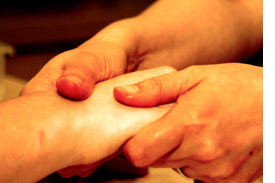Muscle Manipulation

Myofascial release technique has become a general term in the vast manual therapy techniques that have been developed in the past 50 years. The many techniques available to practitioners only fortify the concept that the body is so dynamic and variable; therefore, one technique cannot treat all ailments. Dr. Tim believes that practitioners should learn multiple techniques to allow for variations in conditions that present to their office daily.
Dr Bhakta has studied the principals, theory , and scientific rationale of many muscle manipulation techniques. These range from techniques such as myofascial release, active release, Chinese Gua Sha & Tui Na techniques , Graston, active isolated stretching, proprioceptive neuromuscular facilitation, trigger point therapy, self myofascial release, and acupressure. All of these techniques work and do not work at the same time. What does the mean? It means, that every person, condition, injury, physical characteristics, and body type is unique. Therefore, when one technique might work for one person, it might not work for another person. Ergo, understanding the body's reaction to a particular injury is critical in choosing what type of treatment should be rendered.

Dr. Bhakta starts his evaluation by rebuilding the biomechanical mechanism of injury and creating a understanding of what has happened to the muscular system of entire body. He tries to find weak and/or compensating muscles, injured muscles/tissues, guarding patterns, altered biomechanics, altered muscle tension-length relationships, tendon or ligament laxity, and muscle or tendon hypertonicity, and then creates a plan of action to quickly neutralize the offending patterns and allow the body to heal faster.
